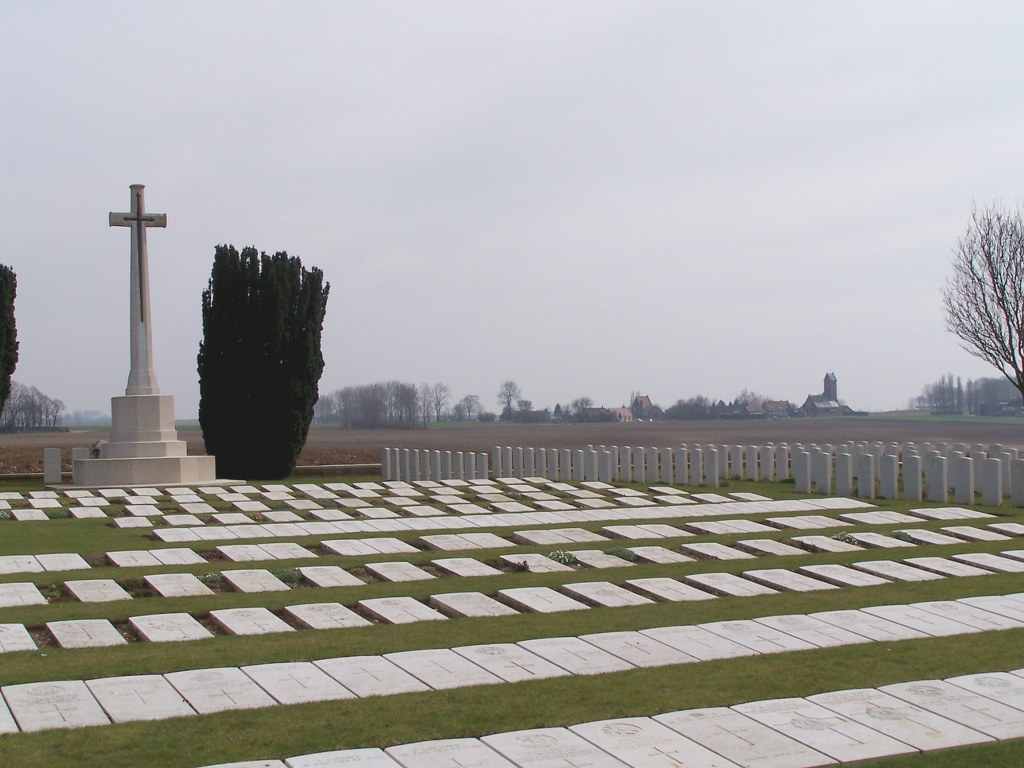William Henry Embleton
Date of birth: 1883
Date of death: 3.9.1916
Area: Outwood
Regiment: West Riding (Duke of Wellington’s)
Family information: Husband of Florence Embleton nee Dixon
Rank: Private
Service number: 202723
War Service
In the absence of his service record, it is not known when William Henry Embleton joined the army. However, he was employed at Low Laithes Colliery, prior to his enlistment in the Duke of Wellington’s (West Riding Regiment). Sometime in 1916, after initial training in England, Private Embleton was drafted to the 1/4th Battalion, in France.
The 1/4th Battalion, Duke of Wellington’s (West Riding Regiment) was a territorial force which, on 4th April 1915, had joined the British Expeditionary Force. On the 15th May, shortly after the Battle of Aubers Ridge, the formation became known as the 147th Brigade, 49th (West Riding) Division.
In December 1915, the 49th Division was deployed within the Ypres Salient, between Frezenburg and Boesinghe. Information was received, from a prisoner, that a gas attack was imminent and all forward troops were put on alert At 05.00 hrs. on the 19th December, Chlorine gas was released from the German front line. This was followed 06.15 hrs. by a bombardment of shells containing Phosgene gas, the first time such a weapon had been used. The British masks could not combat the high concentration of Phosgene and many casualties were incurred. However, the front line troops stood firm and the position was held.
In 1916, the 49th (West Riding) Division left the Ypres Salient and moved south towards the Somme region of France. The Battle of the Somme commenced on 1st July 1916, but the 1/4th West Riding Regiment did not go into the front line until the following day, when they relieved the 1/5th West Yorks., at Johnstone’s Post. The Battalion remained in the battle zone for several days, before being withdrawn.
After a period of reorganization and digging trenches, the 49th Division returned to the front line. On the night of 2nd September 1916, the 1/4th West Riding Regiment moved to assembly trenches in Thiepval Wood. At 05.00 hrs. on 3rd September, the battalion attacked, from the trenches along the Hamel-Thiepval Road, towards the Schwaben Redoubt. The German line was penetrated, but heavy machine-gun fire from the Redoubt and a determined counter-attack, forced the battalion to withdraw to Martinsart Wood.
During this attack the 1/4th Duke of Wellington’s (West Riding Regiment) incurred 347 casualties, one of whom was Private William Henry Embleton. His body was recovered from the battlefield and he was buried in a small cemetery, near where he fell. After the Armistice, his grave, along with others who fell in September 1916, was brought into the Mill Road Cemetery, at Thiepval. There are now 1304 Commonwealth burials at Mill Road, 815 of which are unidentified.
Family Life
William Henry Embleton was born in 1883, the son of Alice Embleton, of Bradford. His mother Alice, who was unmarried, had been in service for a number of years. At the age of ten years she was employed as a nurse-domestic and over the years had been employed as a domestic servant, or cook, in the Bradford area. At the time of the 1891 census, Alice Embleton was employed as a cook, in Manningham and her son, William Henry Embleton, is shown as the adopted son of Isabella Woodhead, at Bowling, Bradford.
During the spring of 1892, Alice Embleton married Joseph Dixon, a widower and coal miner of Dixon’s Fold, Lofthouse Gate. On the census of 1901, Joseph Henry Embleton is living with his mother, step-father and extended family at Stanley Road, Ouzlewell Green and is employed in the coal mines.
In 1904 William Henry Embleton married Florence Dixon, the nineteen year old daughter of David and Hannah Dixon, of Dixon’s Fold, Lofthouse Gate. David Dixon was his step-father’s brother. A year later, in 1905, their son John Dixon Embleton was born. In the census of 1911, William Henry, his wife Florence and young son are shown living at Bridge Cottage, Outwood
 Mill Road Cemetery
Mill Road Cemetery

